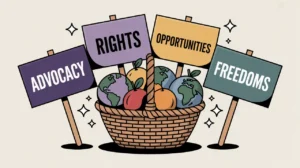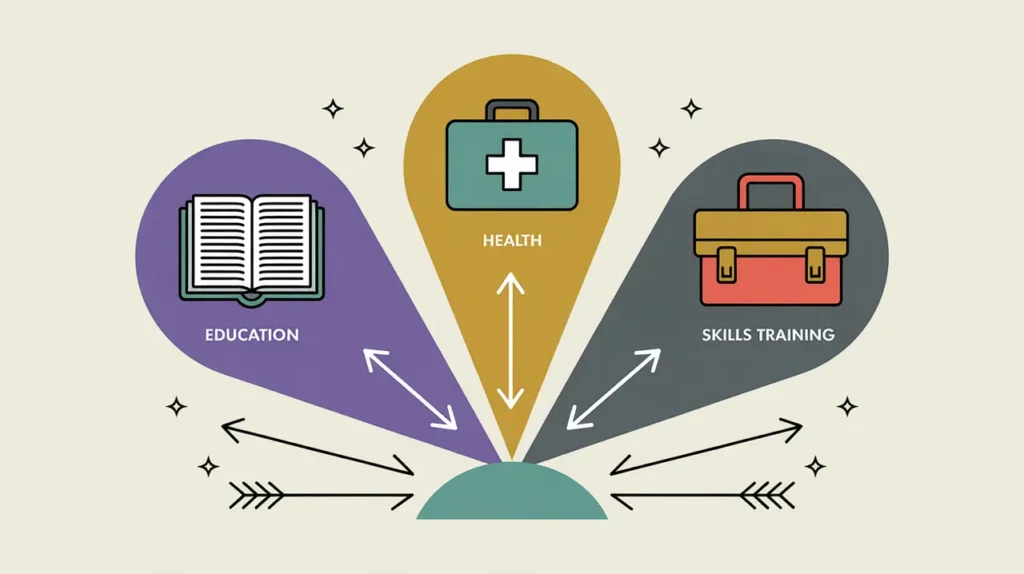What Does Program Design Involve?
Program design is where vision becomes structure. At this stage, nonprofits take the problem statement and impact goals established in program visioning and translate them into a practical model of action. Design specifies who the program will serve, what activities it will include, how those activities will be sequenced, what resources will be required, and how success will be measured.
This step ensures that programs are not just aspirational but operationally sound. It requires balancing ambition with feasibility, integrating compliance and safeguarding requirements, and aligning with donor or partner expectations. Design also determines the data architecture of the program by establishing monitoring, evaluation, and learning (MEL) frameworks that will later support accountability.
A strong design builds for adaptability. It anticipating risks by accounting for diverse participant needs and leaving space for iteration. Weak design, by contrast, results in programs that overpromise, underdeliver, or fail to generate credible evidence of impact. Done well, program design provides staff, funders, and communities with a clear blueprint that guides development, piloting, and eventual implementation.
What Competencies are Associated with this Role?
Program design demands the ability to translate vision into practical, measurable plans. Core competencies include:
- Defining program goals, objectives, and measurable outcomes
- Mapping activities, timelines, and resource requirements
- Building logical frameworks (logframes) and theories of change
- Designing MEL systems and indicators
- Incorporating compliance, safeguarding, and risk mitigation measures
- Drafting operational manuals, curricula, or toolkits
- Integrating inclusion and equity considerations into program models
- Budgeting for activities, staff, and materials at design stage
- Aligning design with organizational mission and donor priorities
- Creating feedback loops for adaptation and iteration
How Might AI and Automation Help this Role?
AI and automation can streamline design by reducing manual effort and supporting decision-making. Opportunities include:
- Generating draft logframes or theories of change from structured prompts
- AI-assisted curriculum design and training material development
- Automated compliance crosswalks to check against donor requirements
- Risk modeling and scenario planning tools
- AI-enabled visualization of program workflows and outcomes
- Multilingual translation of design documents
- Generative AI to create participant-facing materials (e.g., guides, FAQs)
- Drafting monitoring indicators aligned with global standards
What are the Roles by Experience Level?
Program design is often collaborative, with responsibilities distributed across levels:
- Entry: Program Assistant, Design Support Officer – prepare drafts, compile background data, format design documents
- Mid: Program Officer, Design Analyst – draft logframes, build MEL plans, develop curricula, budget activity lines
- Senior: Program Manager, Design Lead – lead the design process, integrate compliance, engage partners, finalize frameworks
- Executive: Chief Program Officer, Executive Director – approve designs, ensure strategic fit, communicate models to funders and boards
How Transferable are the Skills from this Role?
Design skills are highly transferable. Within nonprofits, they enable movement into program management, MEL, and operations. Beyond nonprofits, they map into project management, instructional design, consulting, and product development. Program design develops structured thinking, the ability to translate abstract goals into concrete plans, and familiarity with budgeting and risk management. These are valued in sectors ranging from education to technology, where structured planning is essential. The experience of integrating equity, compliance, and adaptation also equips individuals for policy and governance roles that require balancing competing priorities while keeping sight of long-term goals.







